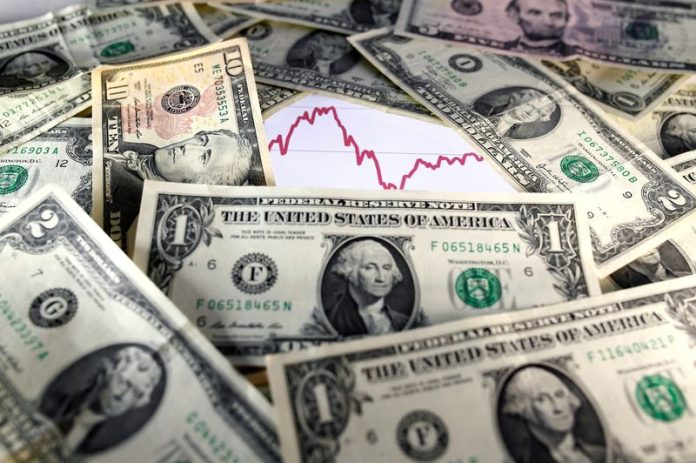By Joice Alves and Rae Wee
LONDON/SINGAPORE (Reuters) – The U.S. dollar rose to a 15-month high against the rouble on Monday after dramatic weekend events in Russia, which saw an aborted mutiny by heavily armed mercenaries.
The dollar index also found some safe-haven support on lingering worries that the protracted monetary tightening cycles from major central banks would further hurt the global economic outlook.
Traders were closely monitoring developments in Russia, after heavily armed Russian mercenaries withdrew from the southern Russian city of Rostov under a deal that halted their rapid advance on Moscow but raised questions on Sunday about President Vladimir Putin’s grip on power.
The Russian rouble tumbled against the dollar. It was 0.2% weaker at 84.88 at 0843 GMT, after hitting 87.23 in earlier trade, its weakest point since late March 2022.
“The armed uprising in Russia … despite being aborted, lay bare risks of Russian instability from within,” said Vishnu Varathan, head of economics and strategy at Mizuho Bank.
“Risk assets may generally not fare so well, especially if geopolitical risks re-emerge,” he added.
Traders also worried about the impact of the rising cost of capital on the global economy.
The euro fell 0.1% against the dollar to $1.0890 after a survey showed German business morale worsened for the second consecutive month in June, indicating that Europe’s largest economy faces an uphill battle to shake off recession.
That added to data on Friday showing that euro zone business growth virtually stalled in June amid a deepening downturn in manufacturing activity and a slow expansion of the bloc’s dominant services industry.
Carol Kong, a currency strategist at Commonwealth Bank of Australia (OTC:CMWAY), said the global economy would likely continue to deteriorate amid the aggressive monetary tightening in major economies. That “will underpin the safe haven U.S. dollar,” she said.
The U.S. dollar index edged up to 102.8, after a gain of more than 0.5% last week, its first in nearly a month.
Sterling rose 0.2% to $1.2740, reversing some of its 0.8% fall last week after an outsized 50-basis-point rate increase from the Bank of England stoked fears of a British recession.
Flash Purchasing Managers’ Index (PMI) data on Friday showed Britain’s economy displayed signs of a slowdown this month but inflation pressures stayed high.
U.S. business activity fell to a three-month low in June and the contraction in the manufacturing sector deepened, though the overall picture indicated economic growth ticked up a notch in the second quarter.
Elsewhere, the Japanese yen rose almost 0.5% to 143.13 per dollar, though was not far from an over seven-month low of 143.87 hit on Friday.
Japan is not ruling out any options in responding appropriately to excessive currency moves, its top currency diplomat, Vice Finance Minister for International Affairs Masato Kanda said on Monday, stepping up warnings against recent yen weakening that was “rapid and one-sided”.
The yen has come under renewed pressure in recent weeks amid the stark contrast between the BOJ’s ultra-low rates and central banks elsewhere, which have been heavily hiking their interest rates.
In Asia, China on Monday returned from a holiday, leaving markets on the alert for further support measures from Beijing to stimulate the country’s faltering economic recovery.
The onshore yuan fell 0.65% to a seven-month low of 7.2199 per dollar, tracking its offshore counterpart, which had weakened past 7.2 per dollar last week.
The offshore yuan was last 0.1% lower at 7.2214 per dollar, after touching its lowest since late November.



















